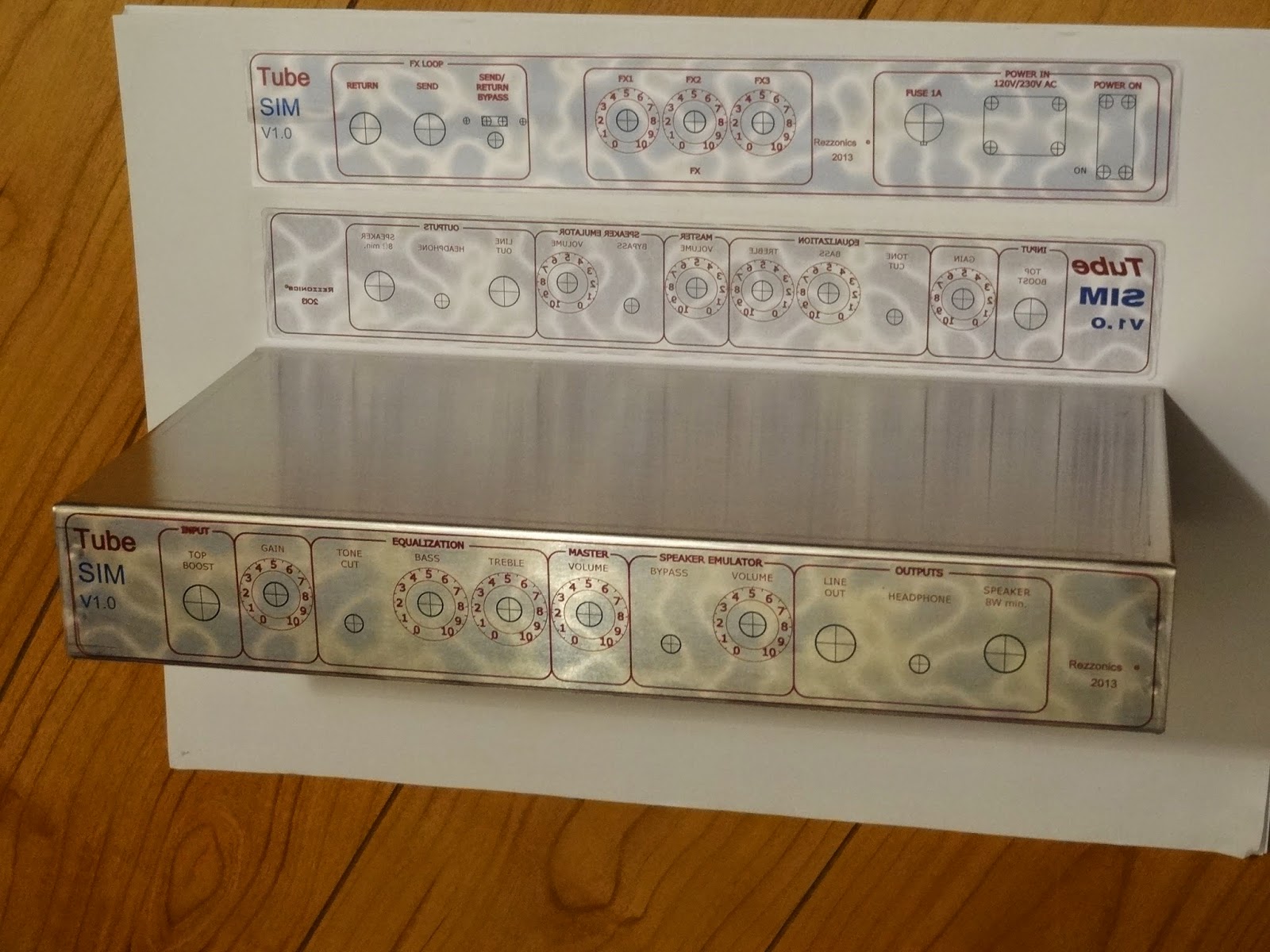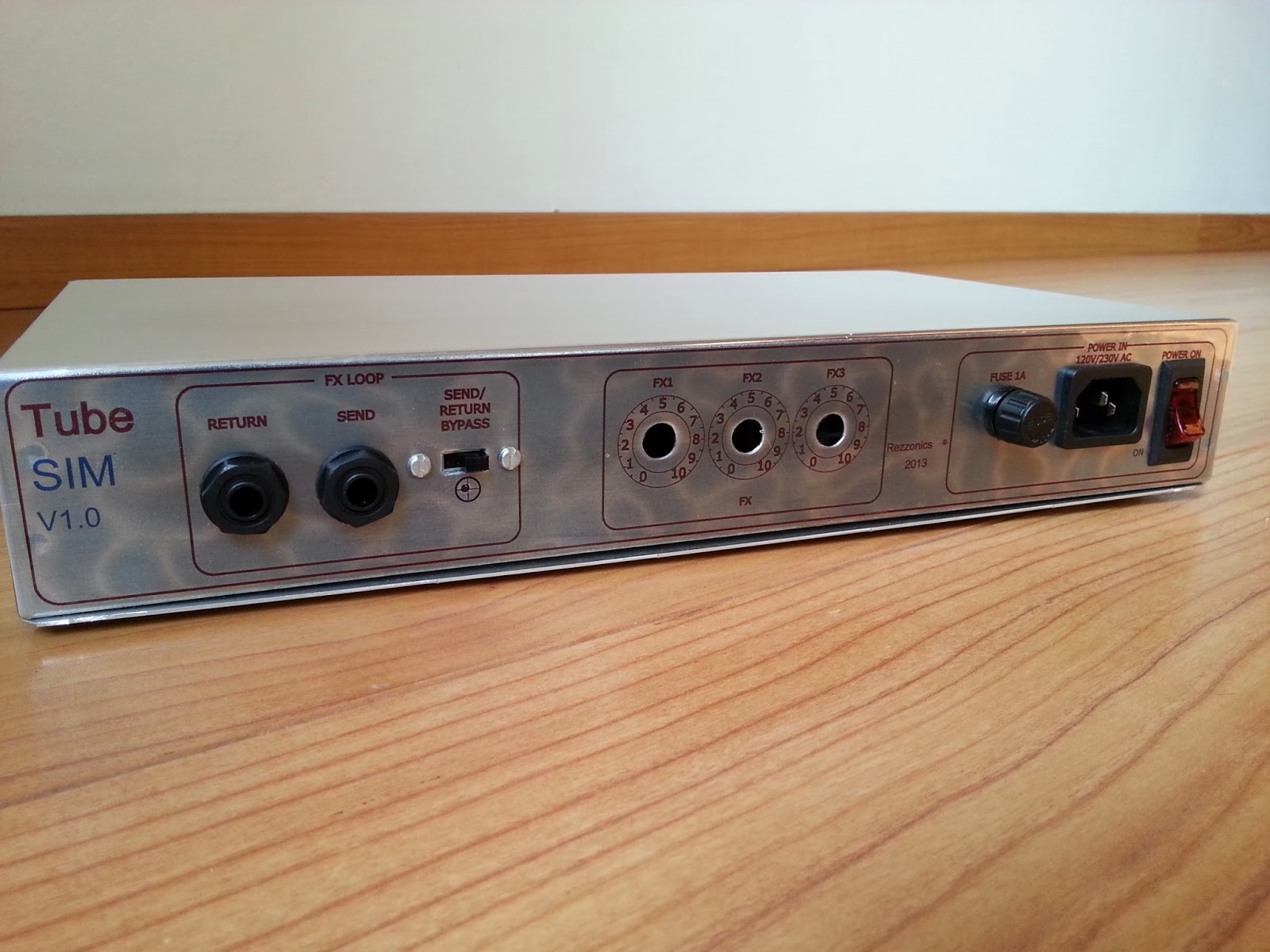Face plate design
For the face plate design I used Inkscape. Inkscape is a free vector graphics editor and design tool for professional and amateur use. There are lots of tutorials, videos and materials for fast and easy learning. Cool free fonts can be found in the internet. It is important to install the fonts in the computer used for design but also in the computer used for printing, otherwise default fonts will be selected.I wanted a simple design with a cool, coloured background but that could match well with the natural aluminium colour of the rest of the box, so I used a kind of steel or aluminum grey and then I used a liquid effect.
This is the result:
It's important to have the right dimensions that correspond with the placement of the potentiometers, switches, jacks and other components in the PCB layout. Since the board was mounted on standoffs in the base plate, the height of PCB and standoffs has to be considered.
The design can be very easily flipped horizontally before printing. I printed the design in A3 printing transparencies used for presentation slides with a laser printer. Since the design is printed flipped in the A3 transparent sheet, the ink stays in the side that has to be glued to the enclosure, which helps protecting the ink from scratching if it were exposed outside.
Cut out front and rear face plates from the transparent sheets and verify that everything is in the right place. You can actually see the effect of not installing the proper fonts in the computer used for printing.
Front face plate placed in position (not glued yet):
Rear face plate placed in position (not glued yet)
Chassis assembly
Before fixing the face plate to the chassis, holes must be drilled in the chassis.Instead of using regular metal drills I recommend using a multi-drill bit and of course a drill support, a much higher precision of drilling is obtained.
Not flipped design can be printed in a regular paper, placed in position and with a hammer and a punch tool the center of the holes to be drilled can be marked.
Once the holes have been drilled, chassis cover must be put in place because very often components are not perfectly aligned or they don't have the exact diameter, so the holes must be adjusted with a file.
Once printed, the design is cut out with some scissors and fixed to the chassis faceplate using transparent glue in spray:
Aluminum chassis must be perfectly clean with no traces of dust, grease or fingerprints. Some acetone can be used for cleaning it.
The glue must dry for 2 or 3 minutes before applying to the chassis, it must be positioned carefully and properly aligned trying to avoid that bubbles form between the face plate and the chassis. Use a clean cloth and apply some force to stick the face plate to the chassis.
Once the face plate is in place, a cutter can be used to remove the face plate in those areas corresponding to the holes.
Now the chassis is fixed to the PCB and base plate, inserting the front components in their holes that were previously verified. rear components are soldered with wires to the board. Nuts are added to potentiometers, switches and jacks with black plastic spacing washers.
Insert the rubber buttons with the potentiometers completely turned anti-clockwise and the dials pointing at 0, and the job is done!!
Front view of finished chassis:
Rear view of the finished chassis
The Tube Simulator is finished, now is the time to plug it and see how it sounds!!
But wait I need a cabinet speaker to plug my Tube Simulator amplifier...







